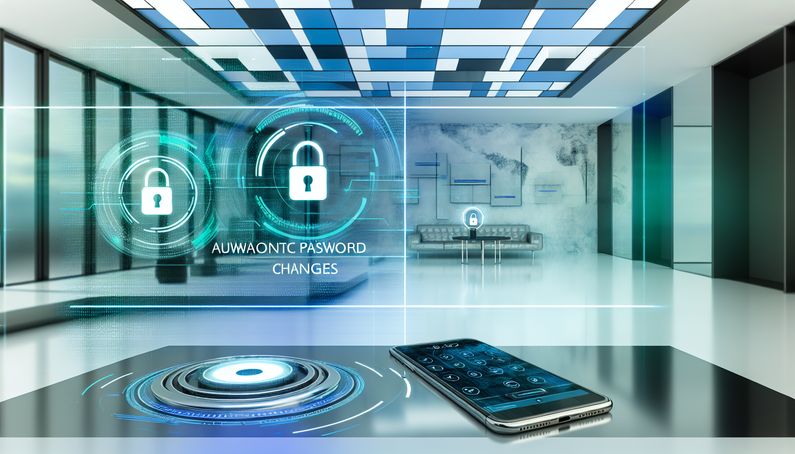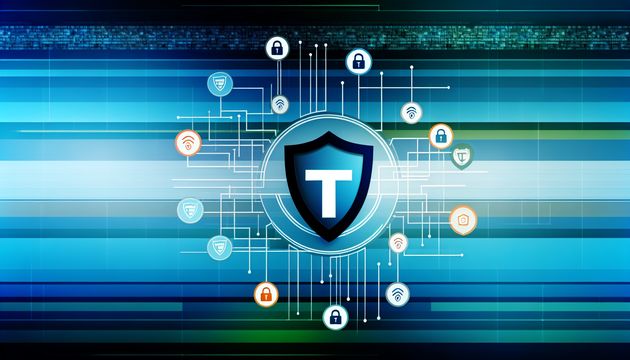
Enhancing Security with Self-Service Password Resets
The ability for users to reset their own passwords without compromising security is a critical aspect of modern cybersecurity strategies. As organizations strive to enhance user autonomy while maintaining robust security protocols, the implementation of secure self-service password reset (SSPR) systems becomes paramount. Traditional methods like SMS messages or security questions are increasingly vulnerable to attacks such as phishing, prompting a shift towards more secure alternatives like authenticator apps and hardware tokens. These methods offer a higher level of protection against common threats, as discussed by Bleeping Computer. Furthermore, integrating multi-factor authentication (MFA) into the SSPR process adds an additional layer of security, effectively mitigating risks associated with stolen credentials, which are implicated in nearly half of all data breaches (Bleeping Computer).
Core Security Considerations
Identity Verification Methods
Implementing robust identity verification methods is crucial to ensuring secure self-service password resets (SSPR). Traditional methods such as SMS messages or security questions are susceptible to interception and guessing, making them less secure. Instead, organizations should adopt more secure methods like authenticator apps or hardware tokens. These methods provide a higher level of assurance against common attack vectors, such as phishing and prompt bombing, as highlighted by Bleeping Computer.
Multi-Factor Authentication (MFA)
Multi-factor authentication (MFA) is a critical component of a secure SSPR process. By incorporating phishing-resistant technologies, MFA can effectively validate users before allowing any password reset actions. This approach not only hardens the verification process but also helps organizations realize the benefits of SSPR without introducing new vulnerabilities into their security framework. The importance of MFA is underscored by the fact that stolen credentials are involved in 44.7% of breaches, according to Verizon’s Data Breach Investigation Report, as cited by Bleeping Computer.
Mitigating Social Engineering Risks
Social engineering attacks pose a significant threat to SSPR systems. Security teams should take proactive steps to minimize these risks by avoiding traditional challenge-response questions, which can be easily bypassed through phishing or publicly available data. Instead, organizations should implement dynamic challenge-response mechanisms that reference recent user activity or contextual data, such as the last file accessed or recent login history. This approach makes it significantly harder for attackers to impersonate legitimate users, as noted by Bleeping Computer.
Contextual and Risk-Based Authentication
Integrating risk-based authentication into the SSPR workflow can further enhance security by detecting and blocking suspicious behavior. Techniques such as geolocation analysis, device fingerprinting, and login velocity checks can flag anomalous reset attempts originating from unfamiliar locations or devices. For instance, if a reset request comes from a country where the user has never logged in before, or from a new browser not associated with their profile, the system can prompt for additional verification or deny the request entirely. This layered approach to security is essential for reducing the risk of social engineering attacks without undermining the convenience of SSPRs, as detailed by Bleeping Computer.
User Experience and Adoption
A smooth and intuitive user experience is critical to the successful adoption of SSPR solutions. Reducing friction during the reset experience helps lower error rates and ensures that users complete the process on the first attempt. Offering real-time feedback on password requirements or flagging common mistakes can prevent failed submissions and re-entry issues. The more intuitive and supportive the SSPR experience is, the more likely users are to embrace it. Solutions like Specops uReset are designed with this in mind, integrating seamlessly with Active Directory and supporting customizable verification flows, as mentioned by Bleeping Computer.
Integration with Existing Systems
For SSPR solutions to be effective, they must integrate seamlessly with existing systems such as Microsoft Active Directory, group policies, and other identity solutions. This integration ensures that users can authenticate and reset their passwords from any location, thereby reducing support overhead and enhancing business continuity. Additionally, for remote workers, the solution should update their locally cached credentials, ensuring they remain productive and secure, regardless of their location. This approach is emphasized by Specops Software, which highlights the importance of integration in achieving a secure and efficient SSPR process.
Adoption and Implementation Challenges
The successful implementation of SSPR solutions requires more than just providing users with a button to reset their passwords. Many organizations have been unsuccessful in implementing these solutions due to a lack of a good process and software solution. To avoid these pitfalls, organizations should follow best practices for SSPR implementation, such as easy onboarding or pre-enrollment options to ensure user adoption. The adoption rate, defined as the percentage of users performing password reset self-service compared to the total number of password resets, is a key performance indicator for any SSPR software. According to the Service Desk Institute, a normal self-service password reset tool will likely achieve only 20–40% adoption, as noted by FastPassCorp.
Balancing Security and Usability
Achieving a balance between security and usability is essential for the success of SSPR solutions. Setting the security bar too high can lead to users attempting to circumvent or ignore the controls, while setting it too low can fail to adequately protect the environment. Therefore, self-service tools should enable best practices for password resets, ensuring that they are both secure and user-friendly. This balance is crucial for maximizing the benefits of SSPR while minimizing potential risks, as discussed by Specops Software.
Realizing the Benefits of SSPR
Organizations that successfully implement SSPR solutions can realize significant benefits, including reduced workload for the service desk, improved service to end-users, and enhanced security. By allowing users to reset their passwords independently, organizations can save on the costs associated with help desk calls, which account for an estimated 20% to 50% of all help desk inquiries. This cost-saving potential, combined with improved security and user satisfaction, makes SSPR an attractive option for organizations of all sizes, as highlighted by Specops Software.
By focusing on these core security considerations, organizations can implement SSPR solutions that not only enhance security but also improve user experience and operational efficiency.
Final Thoughts
In conclusion, the successful implementation of self-service password reset solutions hinges on a delicate balance between security and usability. By adopting advanced identity verification methods and integrating multi-factor authentication, organizations can significantly reduce the risk of unauthorized access while empowering users to manage their credentials independently. The integration of contextual and risk-based authentication further enhances security by detecting and preventing suspicious activities. As highlighted by Specops Software, seamless integration with existing systems and a focus on user experience are crucial for maximizing the adoption and effectiveness of SSPR solutions. Ultimately, organizations that embrace these strategies can achieve substantial cost savings, improved security, and enhanced user satisfaction.
References
- Bleeping Computer. (n.d.). Can users reset their own passwords without sacrificing security? https://www.bleepingcomputer.com/news/security/can-users-reset-their-own-passwords-without-sacrificing-security/
- Specops Software. (n.d.). Password reset best practices. https://specopssoft.com/blog/password-reset-best-practices/
- FastPassCorp. (n.d.). Best practices for password self-service. https://www.fastpasscorp.com/why-fastpass/insights/best-practices-for-password-self-service/



